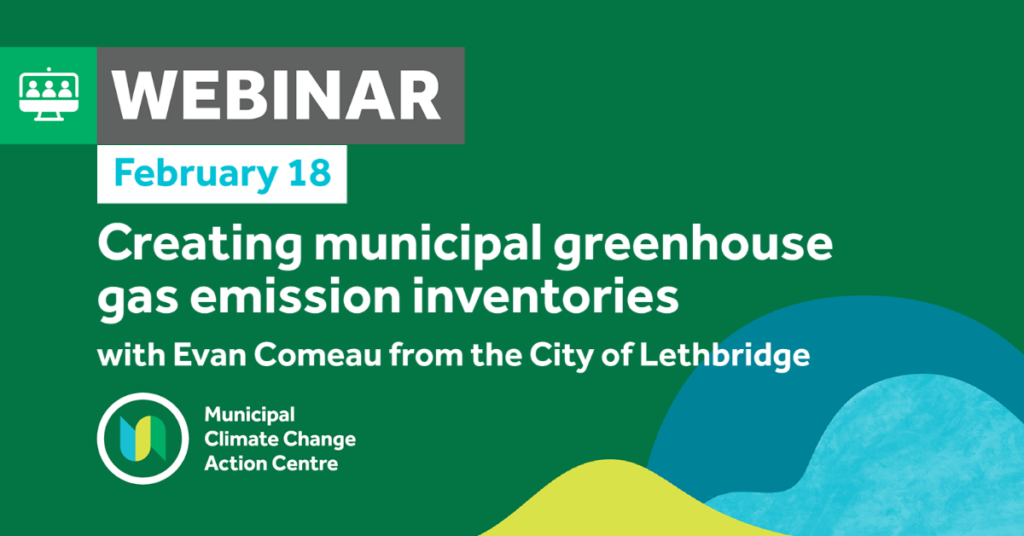4-minute read
Follow this simple approach for calculating emissions reductions to understand your carbon impact.
Quantifying greenhouse gas (GHG) emissions is necessary step to understanding how your municipal project is impacting the environment. Greenhouse gas emissions, like carbon dioxide, methane, and nitrous oxide gases, trap heat in our atmosphere, causing the increase of global temperatures. Understanding the impact of human activity on greenhouse gas emissions is crucial to informing the world’s effort to reduce our impact on the Earth.
Tip: Read more about how greenhouse gas emissions and how they are measured.
Typically, the most accurate way to quantify emissions is to measure them directly. A direct measurement provides data showing the precise amount of emissions that are released into the atmosphere by infrastructure, and other assets. However, directly measuring emissions is not an option for a building or asset that has yet to be constructed.
To determine emissions for a potential project, you will want to quantify emissions based on a calculation. Calculating emissions may seem complex and overwhelming, but there is a simple solution.
Calculation Method
The basic method for calculating GHG emissions is to multiply the activity level or rate (A) by its corresponding emissions factor (EF):
Activity (A) x Emissions Factor (EF) = GHG Emissions
Activity Data
Activity data is the level or rate of a specific action that produces emissions. For an accurate calculation, the activity data that you use should be as exact and specific as possible.
Typically, activity data refers to energy consumed or waste generated. For example, this could be:
- the amount of fuel used in a car,
- the amount of electricity used in a building, or
- waste generated at a landfill.
Tip: These resources provide local governments with a user-friendly framework to quantify, monitor and manage GHG emissions generated at the local level.
Emissions Factors
Emission factors represent the rate or quantity of GHG emissions that are released because of a specific activity. Emission factors are offered by a variety of sources, so it may be challenging to know which one to use.
You may choose emission factors from your preferred source, but often the emission factors will be prescribed by a specific program, funding source, or reporting mandate that applies to your initiative.
For example, large industrial facilities in Alberta fall under the Technology Innovation and Emissions Reduction (TIER) Regulation, so they must use emissions factors provided by the Government of Alberta in the Carbon Offset Emission Factors Handbook. This is also the resource used for calculating emissions throughout all of the Municipal Climate Change Action Centre’s programs.
The Partners for Climate Protection Program recommends municipalities use emissions factors from Environment and Climate Change Canada’s National Inventory Report because these emissions factors are specific to Canada.
Calculating GHG Emissions for Projects
With a basic understanding of the calculation, you can break down the process for emission reduction projects into five steps.
1. Set Project Boundary
For municipalities, the typical boundary is the physical, geographic boundary of the municipality. For corporate municipal actions, the boundary may be even smaller, limited to the corporate boundary of municipal operations.
2. Create a Baseline
To determine the amount of emissions reduced by a mitigation project, two scenarios must be created and compared.
- The baseline scenario serves as the business-as-usual, reference case representing emissions if the mitigation project did not exist.
- The project scenario represents your potential emission reduction project, for which you are completing the calculations.
The difference between these two scenarios represents the emissions reduced because of the project.
Tip: The remaining steps must be completed for both the baseline and project scenarios.
3. Determine Activity Data
As outlined in the basic formula above, activity data must be gathered to determine the associated emissions. Collecting and documenting high-quality data is the backbone of an accurate calculation.
4. Apply Emission Factors
The corresponding emission factors are now applied to the collected activity data. This establishes the emissions produced in both your baseline and project scenarios.
5. Calculate Reduction
The project’s total emission reduction is the calculated difference between the baseline scenario and the project scenario:
Baseline scenario emissions – Project scenario emissions = Emission reduction
Resources
Many mitigation projects require a more complex analysis to determine emission reductions, but the methodology described here provides you with a place to start.
As an established science, emissions calculations are held to the International Standards for Environmental Management, under ISO 14064.
- ISO 14064-1 specifies principles and requirements for the development of greenhouse gas inventories.
- ISO 14064-2 includes principles and requirements for greenhouse gas calculations for project and baseline scenarios.
The Partners for Climate Protection (PCP) program provides your community with guidance on calculating emissions.
- The PCP Protocol contains guidelines for developing corporate and community-level GHG inventories.
- The PCP program Guidebook on Quantifying Greenhouse Gas Reductions at the Project Level provides a deeper review of the principles. This guidebook includes detailed calculation examples for six municipal mitigation projects, which range from building upgrades, transportation, waste, and renewable energy generation projects.
Get Started
The Partners for Climate Protection Program helps your municipality act against climate change. It consists of a five-step Milestone Framework that helps you reduce emissions in your municipality. The Action Centre supports municipalities by providing advice, tools, workshops, and more.

We’ll talk about:
- the basic steps in creating an inventory,
- how to identify opportunities for mitigation strategies,
- creating a baseline to measure progress from, and
- how the City of Lethbridge updated their emission inventory.
Author: Ronak Patel, Energy and Climate Change Advisor


You must be logged in to post a comment.